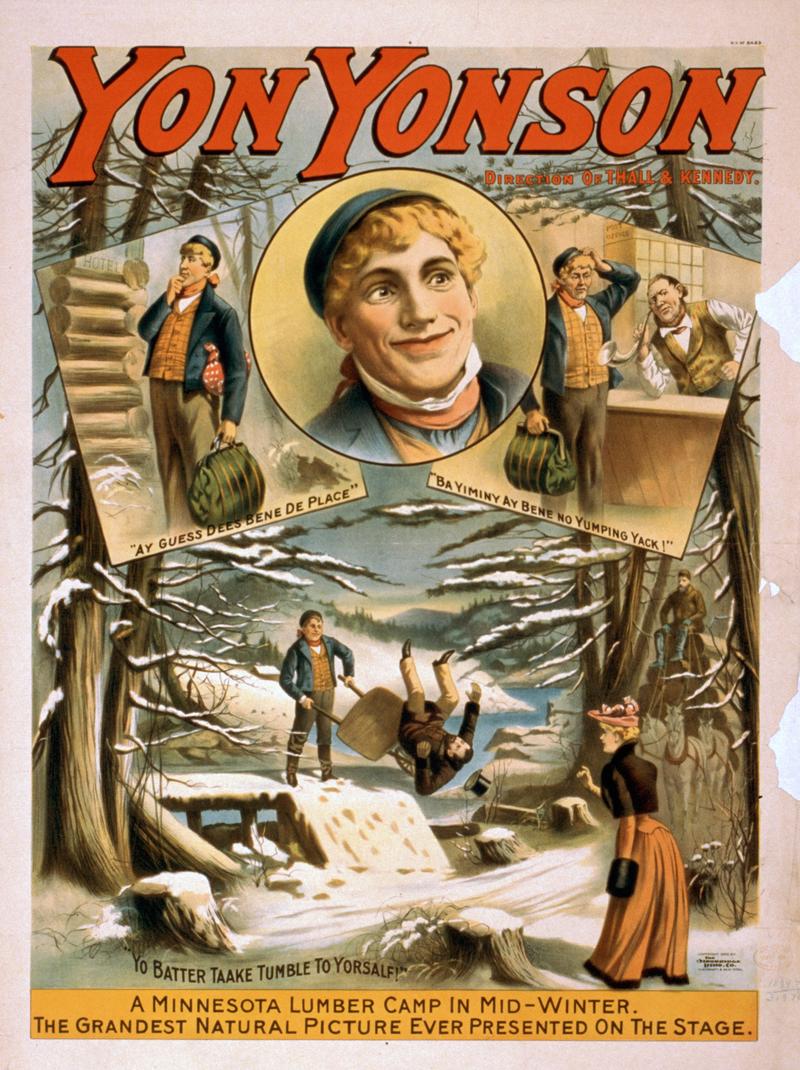 The NYPR Archive Collections
The NYPR Archive Collections
Episode 11 Scandinavians in the United States

From the Office of Education study guide:
THE SCANDINAVIANS THE SWEDES It is ever the function of Swedes to build up and not to tear down.--Archbishop SODERBLOM.
The earliest Swedish settlement was founded in 1638 along the Delaware River. The Swedes farmed, made friends with the Indians, and built Fort Christina, our first log fort. In 1655, the flourishing settlement was captured by the Netherlanders who, later, lost it to the English. The Swedes continued to farm and were again prosperous by the time William Penn arrived in Pennsylvania in 1682. One of the most famous Americans of Swedish origin was John Morton, who cast the deciding ballot for the Declaration of Independence. John Hanson, sometimes referred to as our first president, served as President of the United States Congress in 1781. Famous Settlements. The Swedes did not begin to come in large numbers until the 1840's when letters from relatives and literature from steamship companies gave them a glowing account of the United States. Most of them settled in Wisconsin, Illinois, and New York. The most famous settlements were those of the Jansonist group in Illinois and the Pine Lake group in Wisconsin. Beginning in the sixties, and continuing until the turn of the century, farm workers came in ever-increasing numbers, due largely to poor business conditions in Sweden. They settled in Minnesota, the Dakotas, Wisconsin, Illinois, and Nebraska. The Battleship "Monitor." In the meantime, during the War between the States, John Ericsson, a Swede, had achieved great fame. His battleship, the Monitor, with its revolving gun turret, gave the North command of the sea. John Ericsson also invented the screw propeller. Gifts. Four out of five Americans of Swedish origin live in our farming regions. Many who settled in the cities prospered as builders and skilled workers. The Swedes founded many colleges. They also gave us interesting traditions and customs. They brought us, among other things, the log fort and log cabin. One of the most famous Americans of Swedish descent is Charles A. Lindbergh who made the first solo flight from New York to Paris. In Minnesota and Dakota, the Norse pioneer often precedes local government.-- SAMUEL P. ORTH.
The link between Norway and the New World dates back to the voyage made by Lief Ericson long before the time of Columbus. Immigration from Norway, however, did not begin until 1825. At that time, a small group settled in upstate New York on sites chosen by Cleng Peerson near Geneva and Rochester. Many more arrived in 1836 who, at Peerson's suggestion settled in Illinois. These early settlers came for religious and social reasons. What the Norwegians Did. By 1865, about 80,000 Norwegians had arrived. Thereafter, immigration rapidly increased, due to over population and lack of opportunity in Norway. Between 1865 and 1939, around 900,000 Norwegians arrived, most of them being farmers, artisans, lumberjacks, fishermen, and sailors. The majority of these immigrants settled in the Dakotas, northern Iowa, Montana, Washington, Oregon, and Wisconsin. The Norwegians, like the Germans and Welsh, are great lovers of music, strong supporters of education, and a thrifty, industrious people.
THE FINNS
The Finns have a high standard of morality, are hospitable, faithful, and upright in their business dealings.-E. ALEXANDER Powell. A few Finns had settled with the Swedes along the Delaware River in the seventeenth century. However, they did not come in considerable numbers until two hundred years later when many came with the Norwegians. But, after 1870, thousands came to escape compulsory military service, to escape poverty, and to take advantage of work opportunities in the United States. What the Finns Did. While the Finns settled in many parts of the country, the majority may be found in the copper mines of Michigan, in the iron-ore fields of northern Minnesota, in the logging camps of California, Washington, and Michigan, and as farmers in Wisconsin and other states. They are a deeply religious people, very musical, honest, and fond of athletics. The cooperative movement was launched in Wisconsin by them, a movement taken up by many Scandinavians.
THE DANES
We believe that the Danish people have a spiritual inheritance not without value to humanity in general.--FREDERICK LANGE GRUNDTVIG. Compared with other countries, the immigrants from Denmark have not been numerous, but they have been of a very high type. Less than two thousand Danish people entered the United States during the first half of the nineteenth century. Many followed the Mormons to Utah. Others came after the war of 1866 with Germany. Still others came for political reasons. They settled in Wisconsin, Nebraska, Iowa, Minnesota, Oregon, and other states. Famous Danes. The Danes brought their folk schools with them and helped to develop the great cheese industry of Wisconsin. Outstanding among them have been Jacob A. Riis, journalist, slum fighter, and social reformer; William S. Knudsen, prominent executive of one of our leading automobile factories: and William Hovgaard, one of our most noted naval architects.
WNYC archives id: 125531